WWII 1943 Dated Liberation of Paris HEAVILY COMBAT MARKED Armored Infantry Map
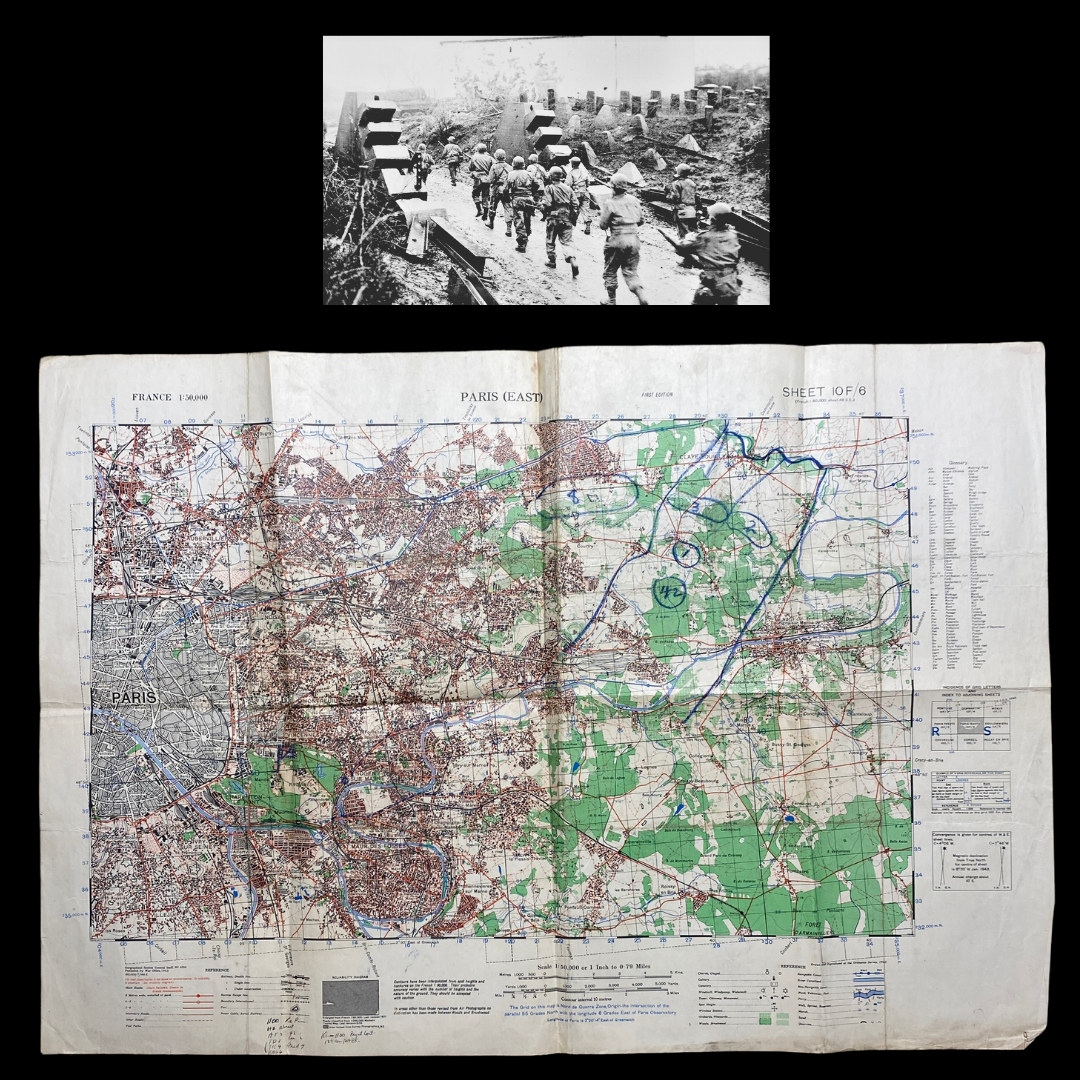

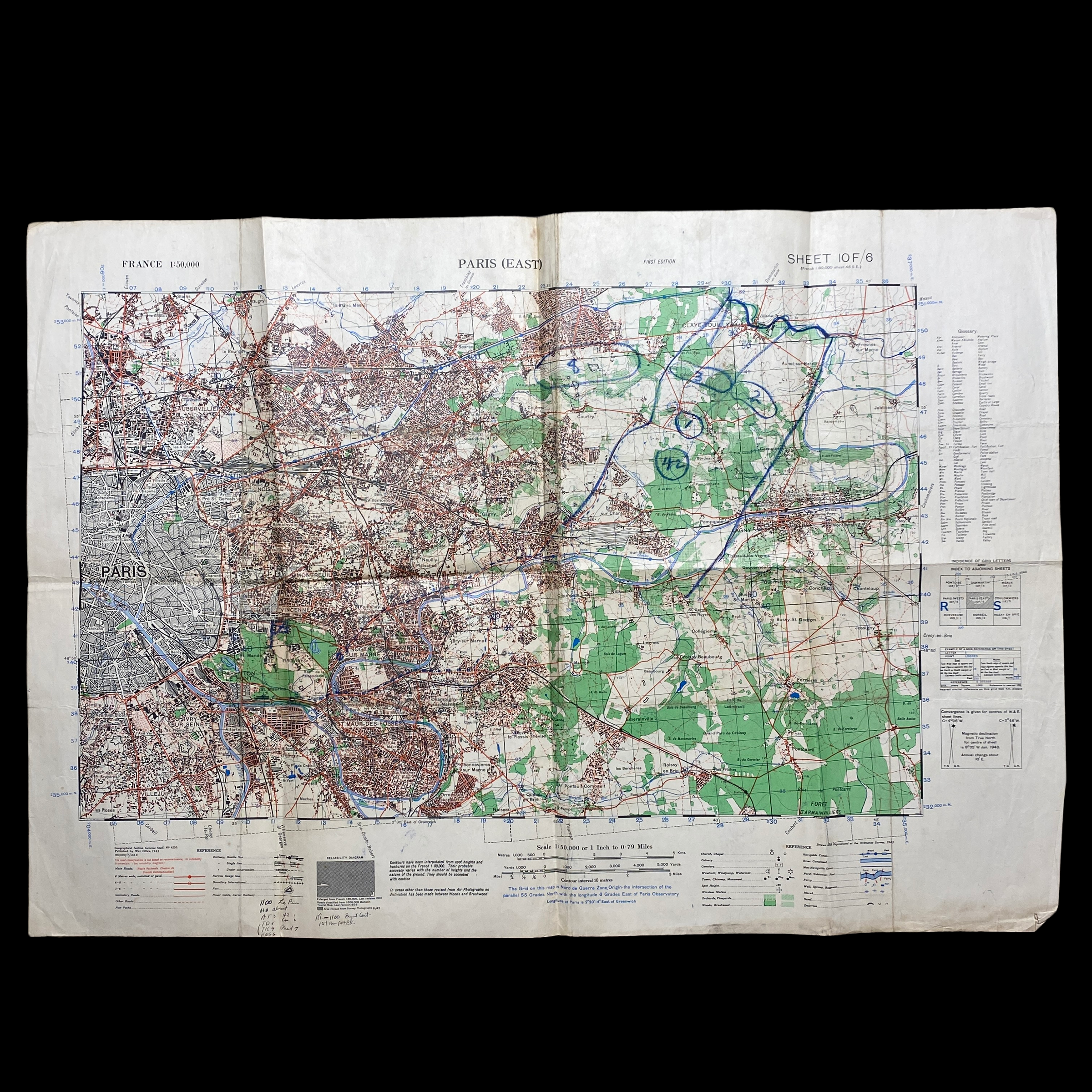

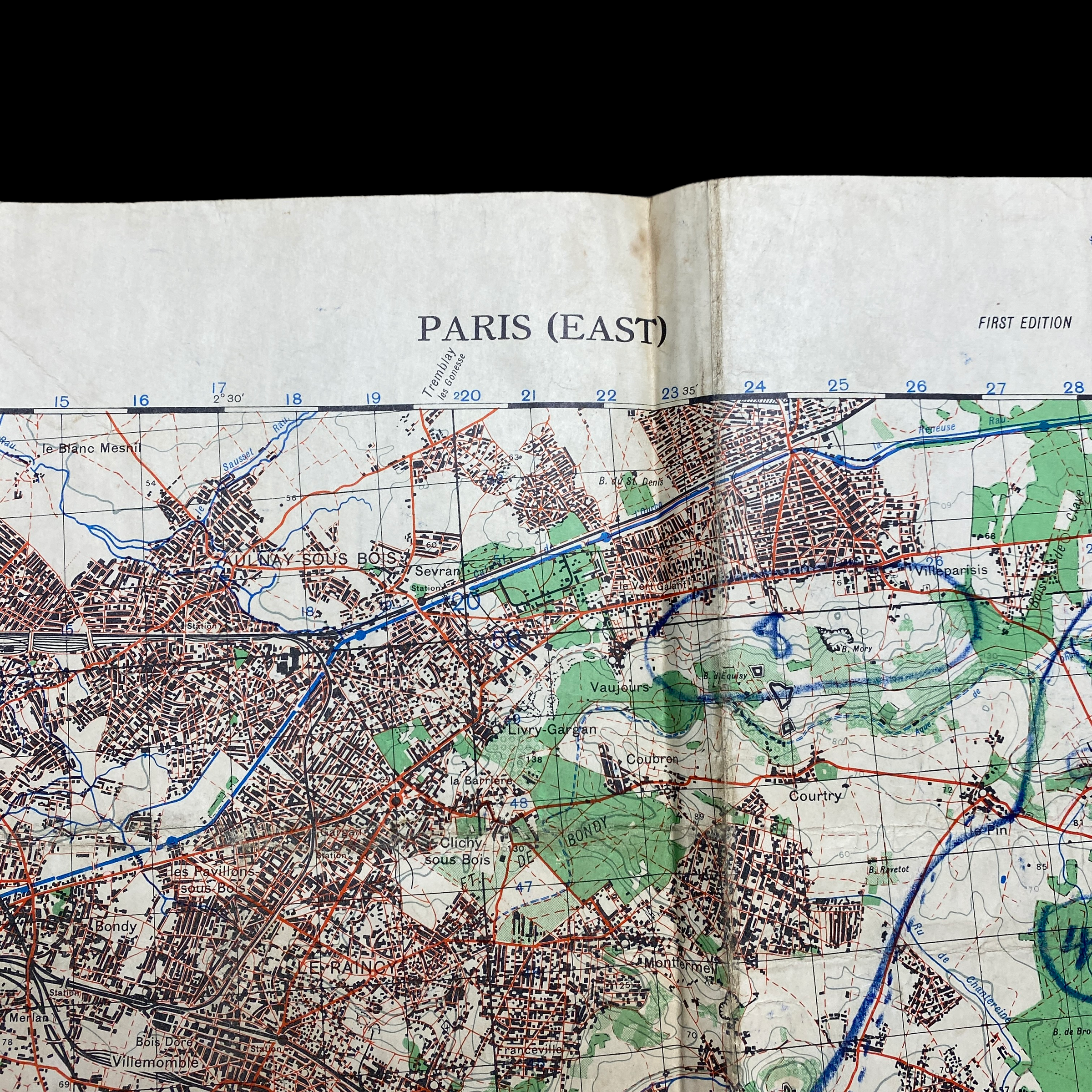
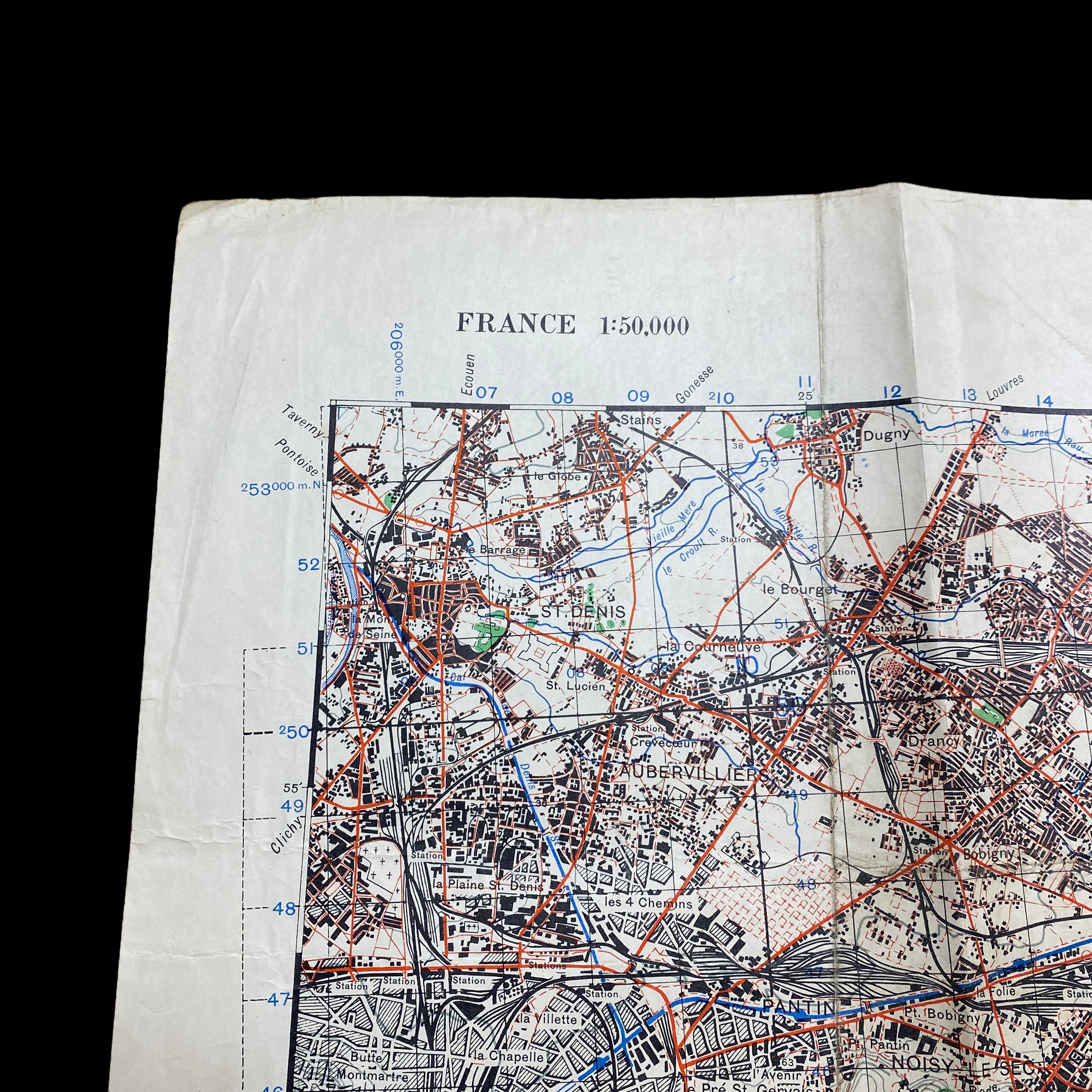
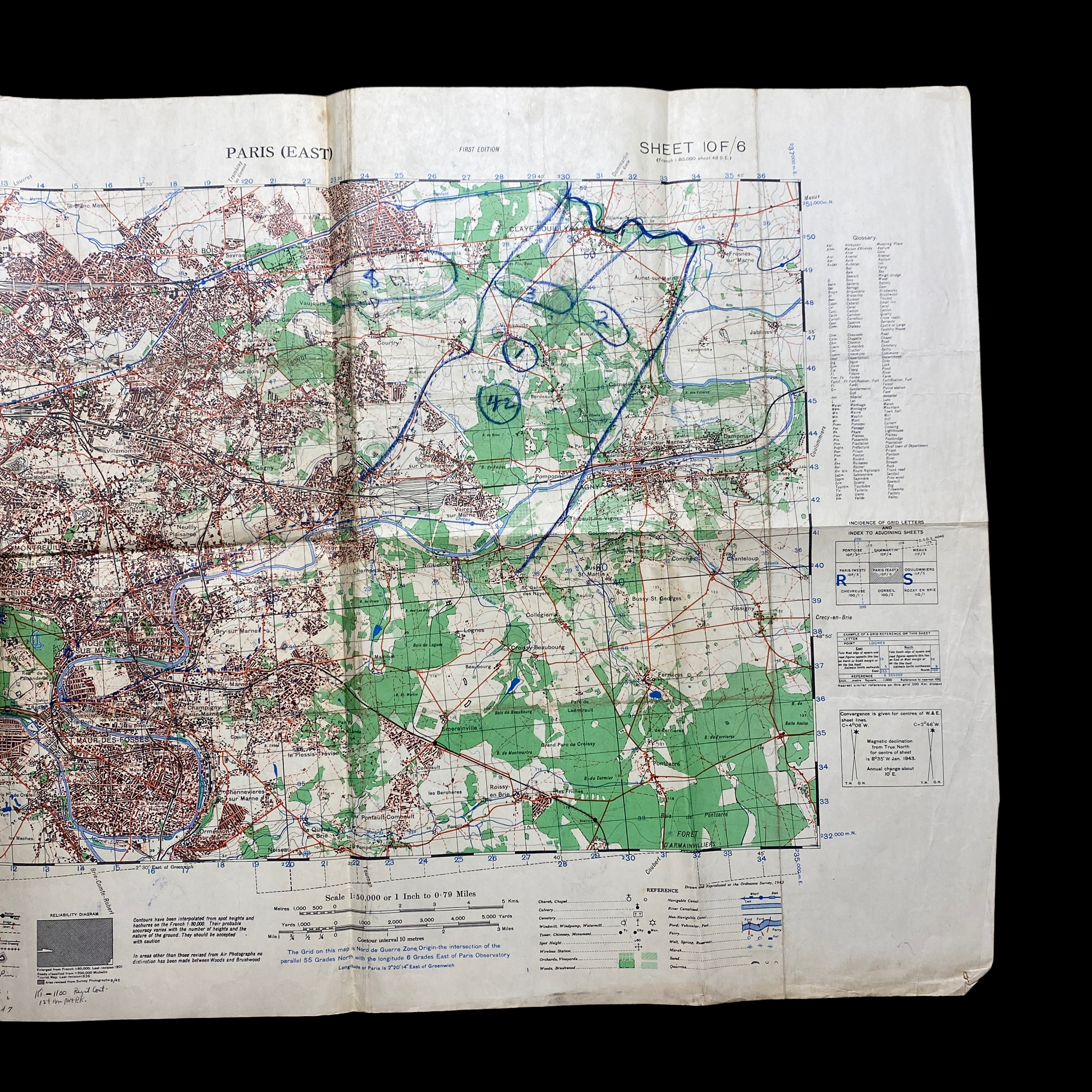
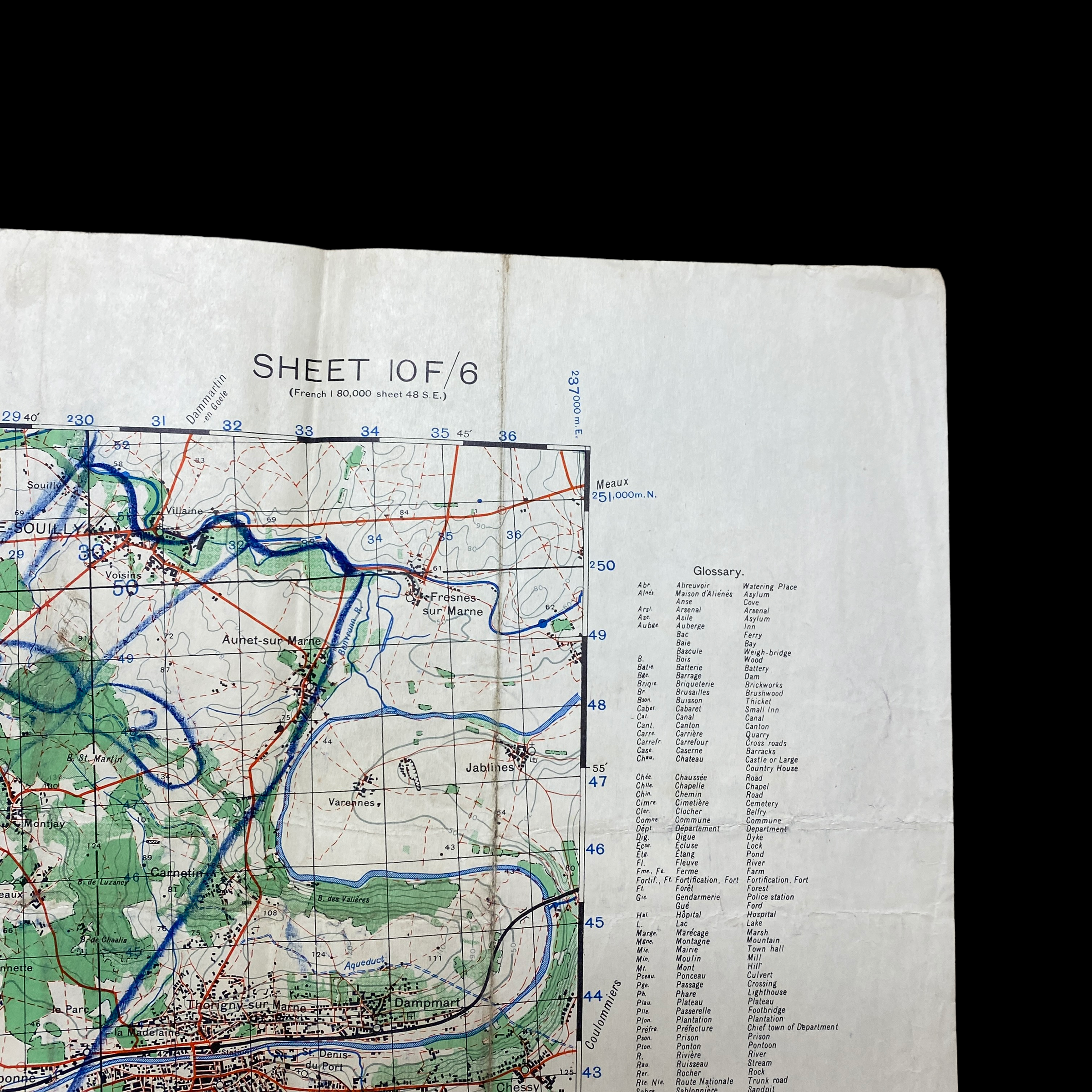
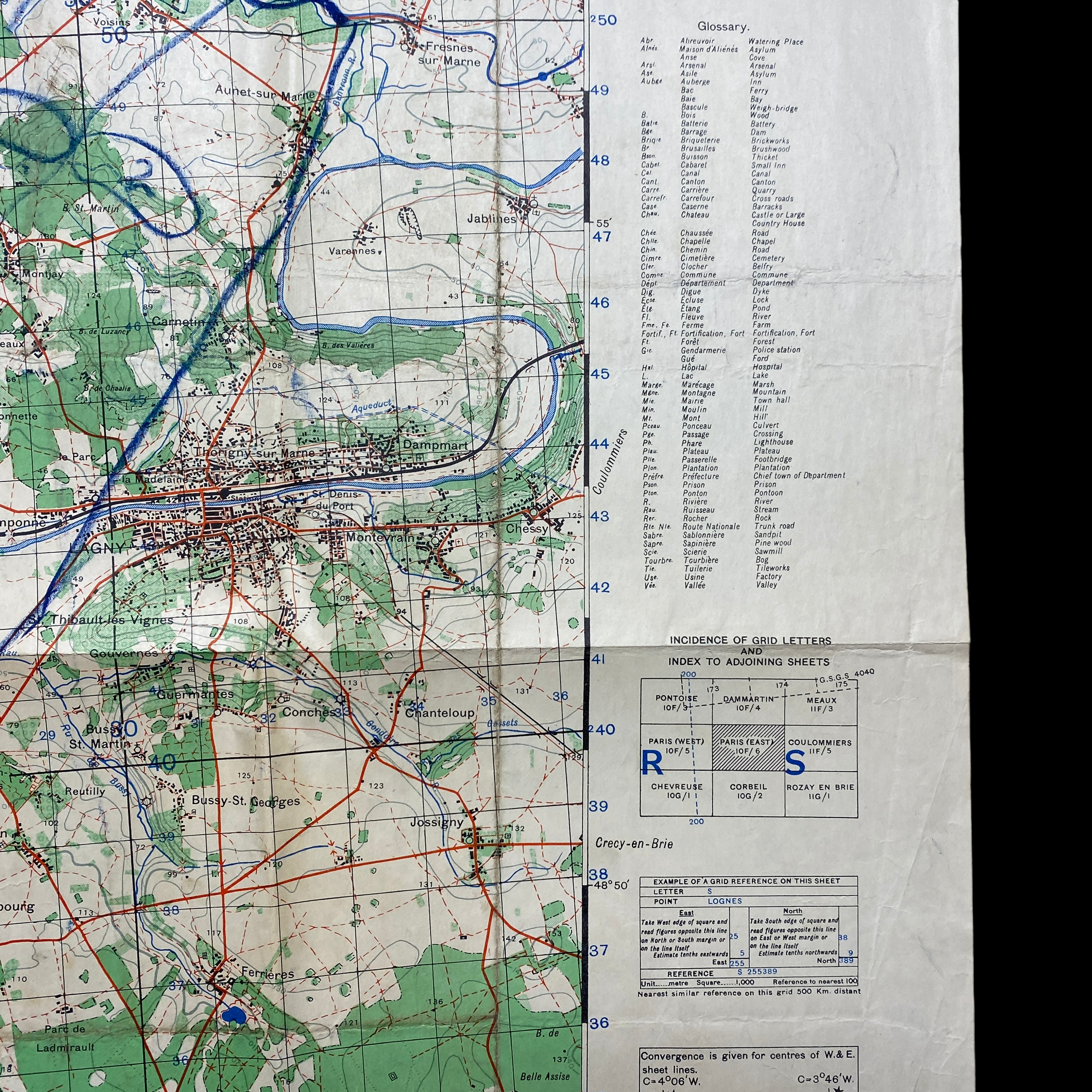
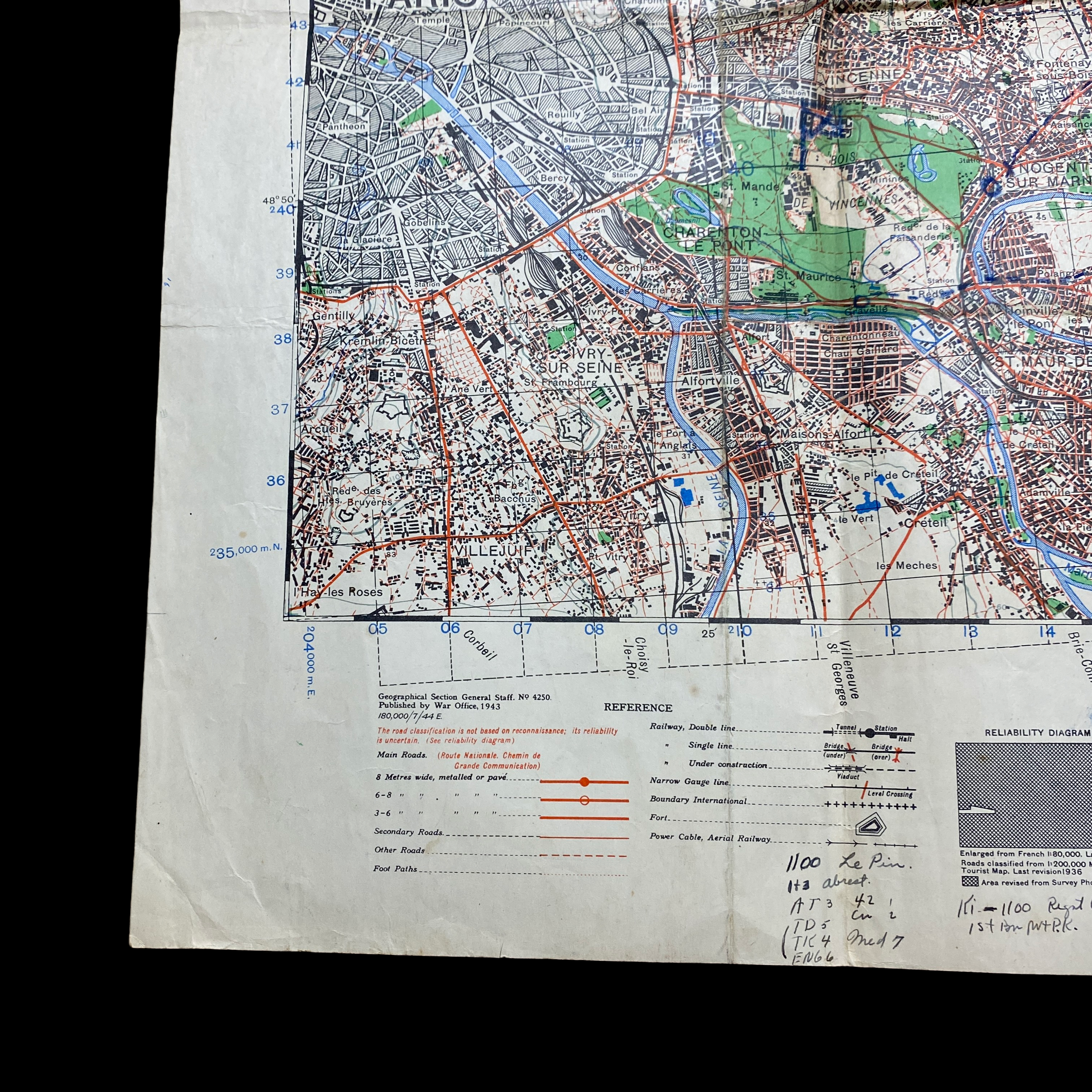
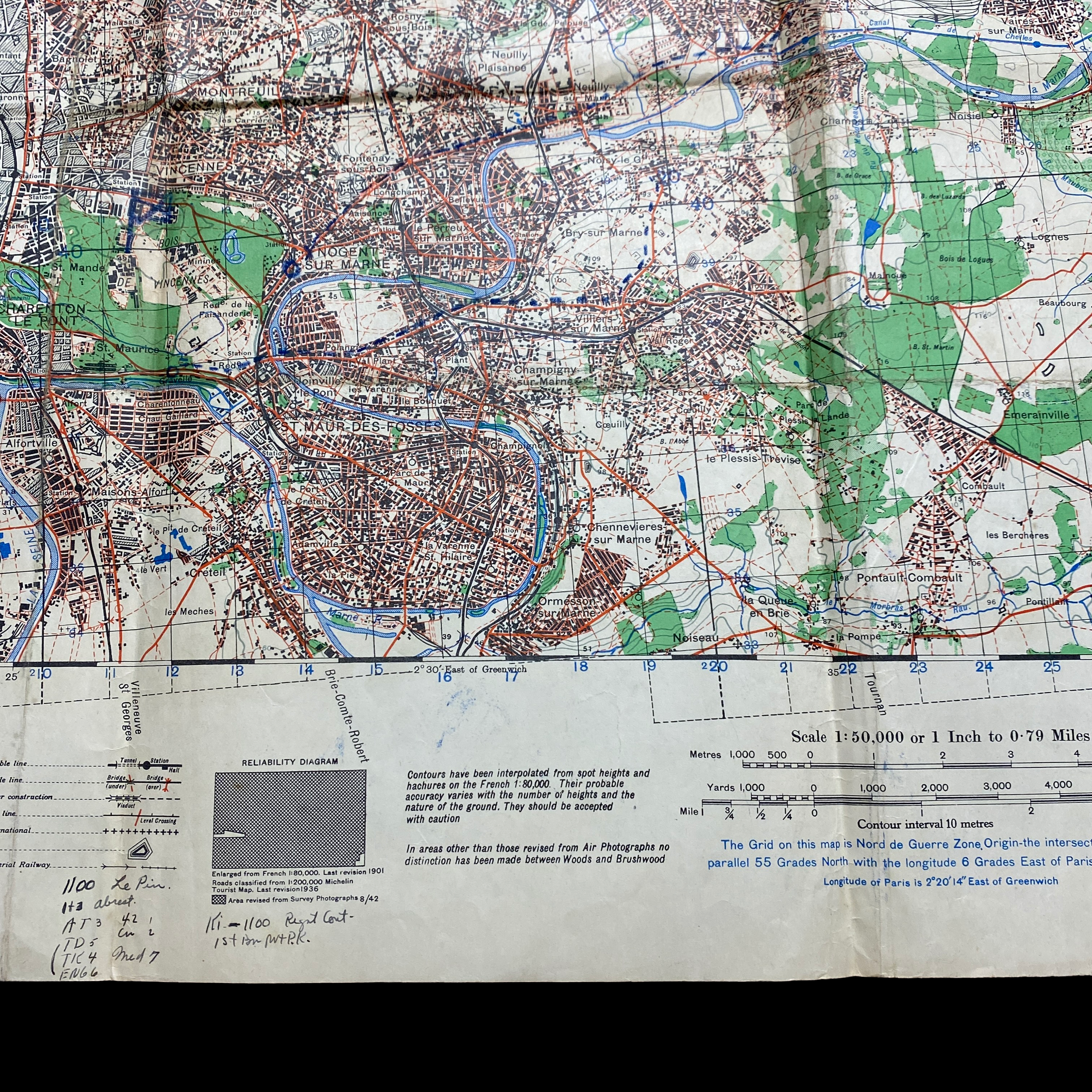
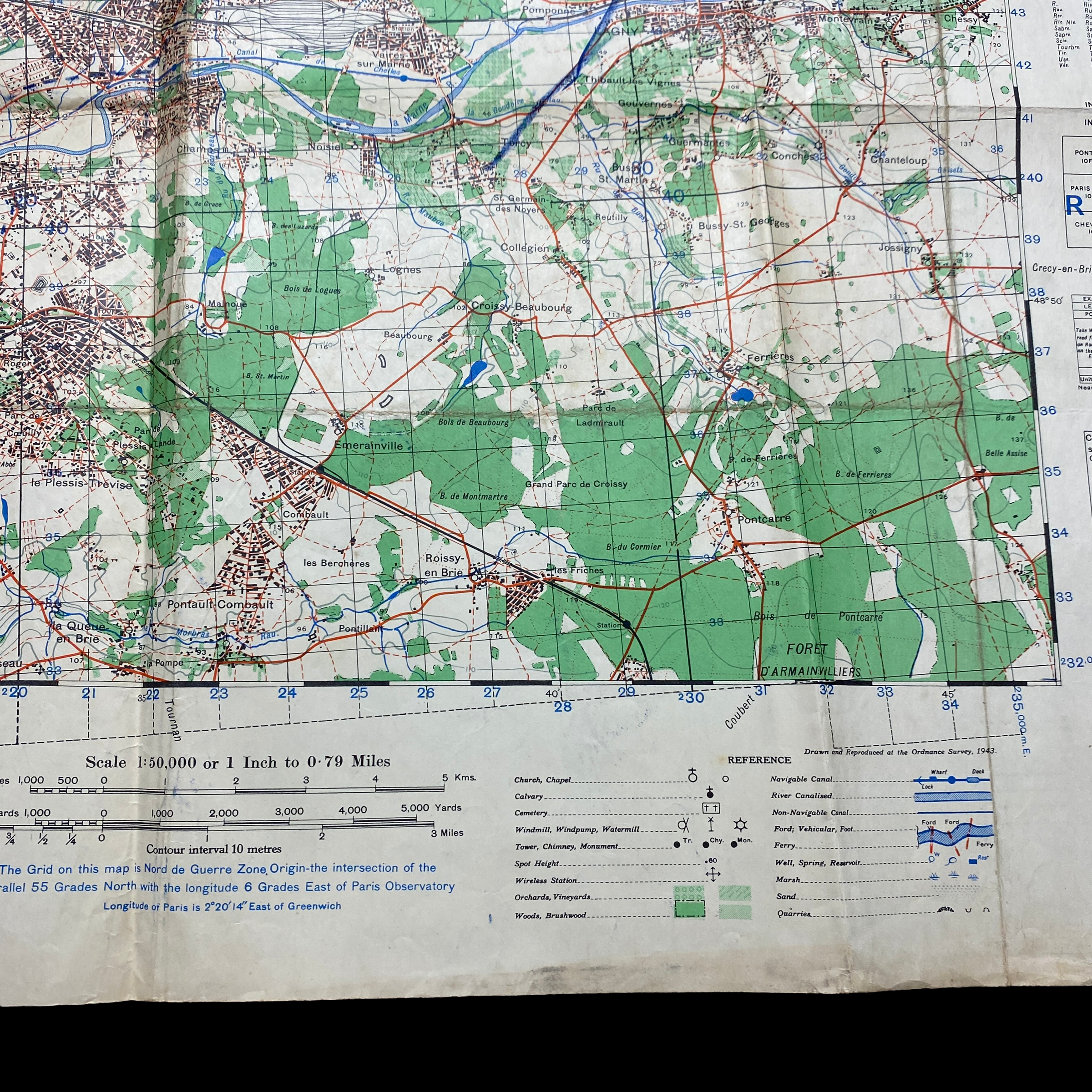
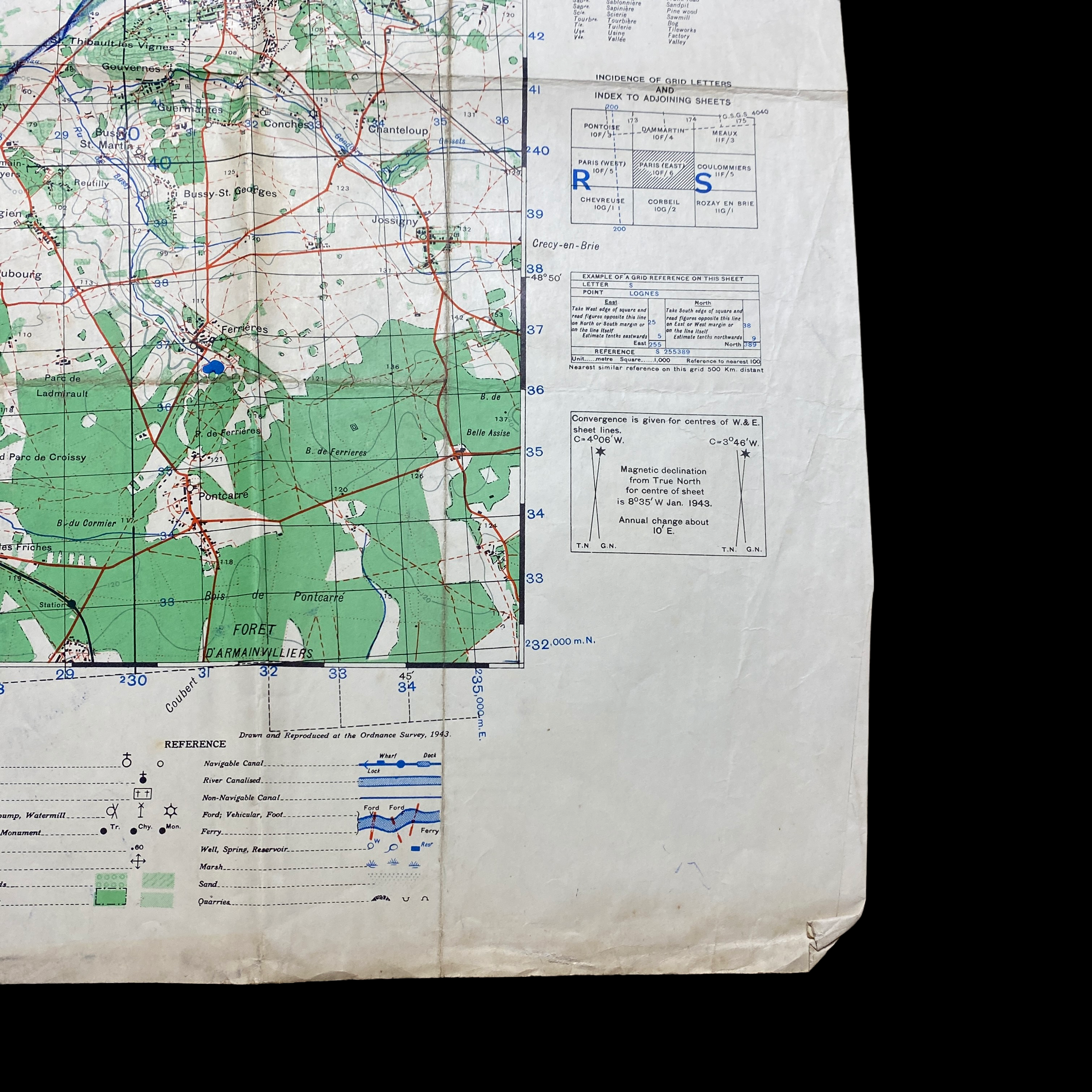
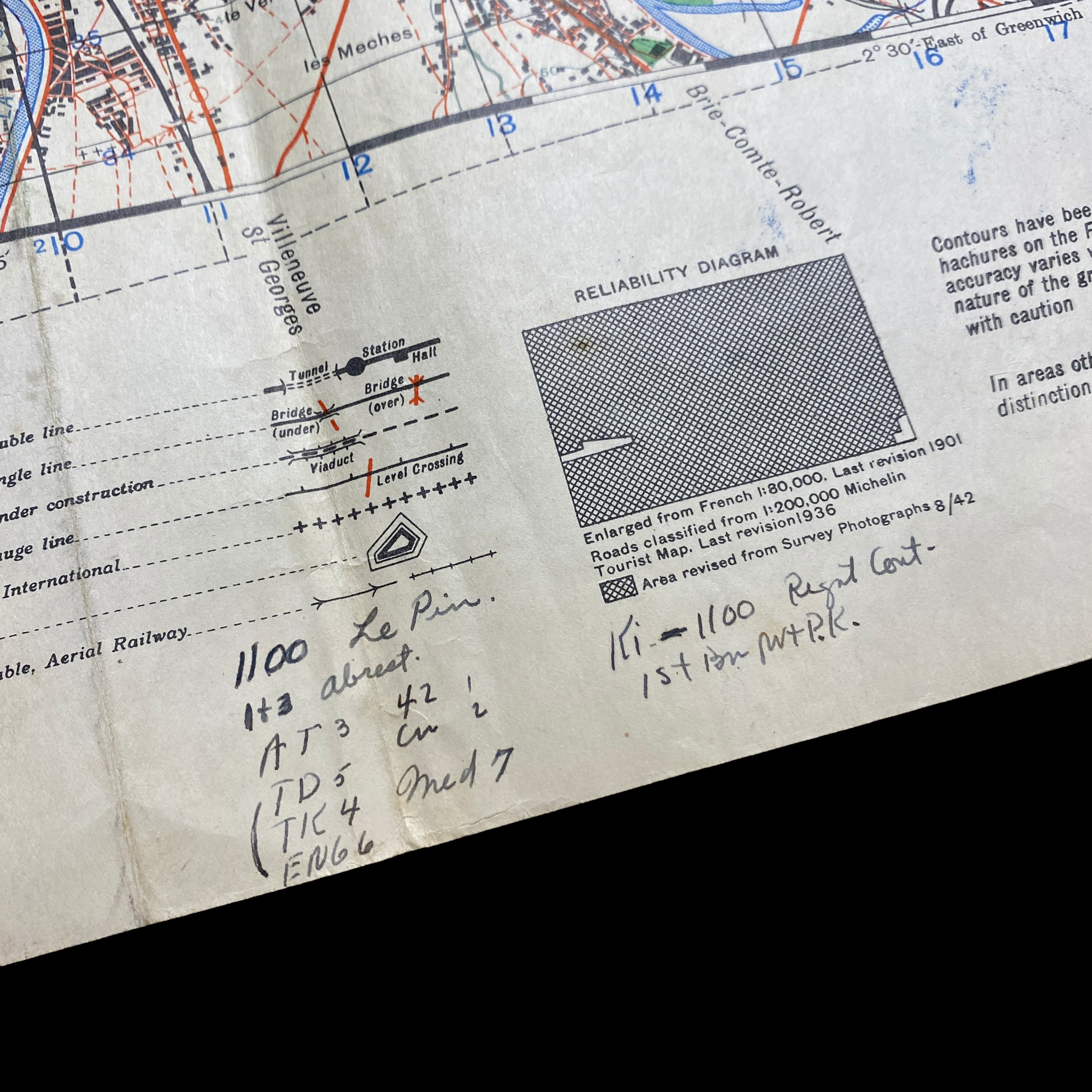
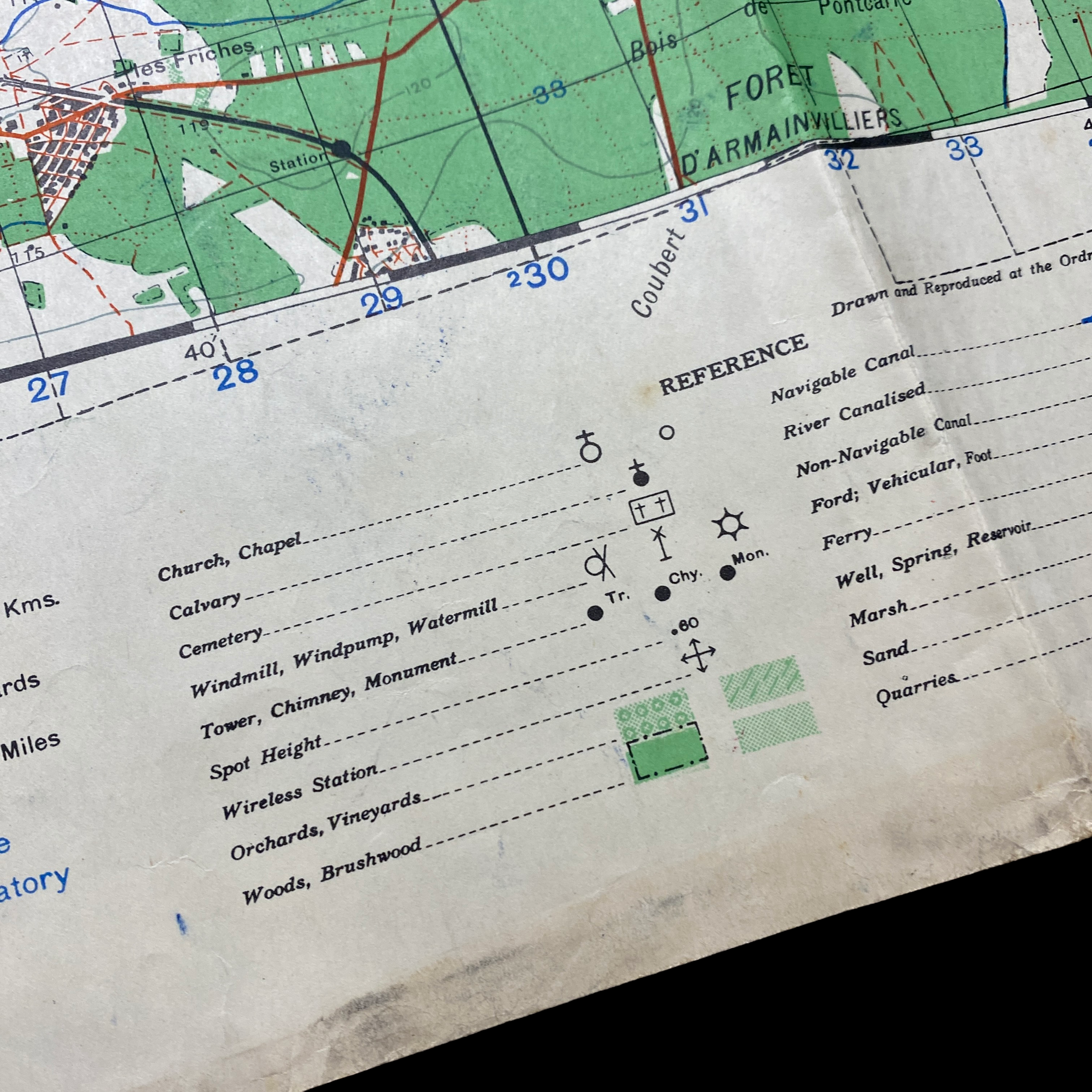
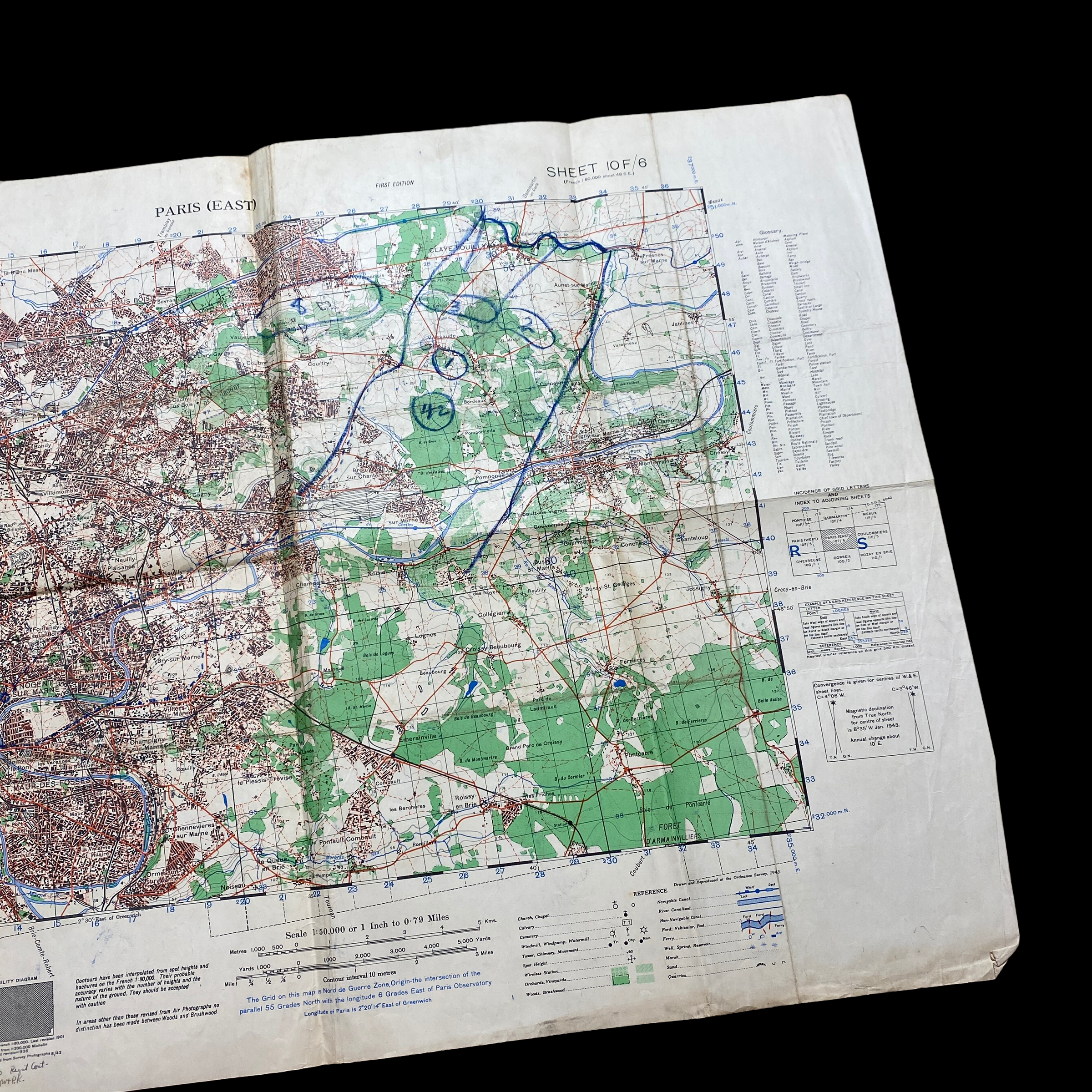














WWII 1943 Dated Liberation of Paris HEAVILY COMBAT MARKED Armored Infantry Map
Comes with hand-signed C.O.A.
This incredible and heavily marked WWII 1943 Allied armored and infantry division Liberation of Paris map was used during the later Allied advance from Paris to the Rhine, also known as the Siegfried Line campaign, was a phase in the Western European campaign of World War II. This map shows heavy combat soldier notations and marking going out of the newly liberated Paris. This map of one of the most famous Allied liberated cities has a tremendous amount of history as the fight against Germany wasn’t over.
This phase spans from the end of the Battle of Normandy, or Operation Overlord, (25 August 1944) incorporating the German winter counter-offensive through the Ardennes (commonly known as the Battle of the Bulge) and Operation Nordwind (in Alsace and Lorraine) up to the Allies preparing to cross the Rhine in the early months of 1945. This roughly corresponds with the official United States military European Theater of Operations Rhineland and Ardennes-Alsace campaigns.
German forces had been routed during the Allied break-out from Normandy. The Allies advanced rapidly against an enemy that put up little resistance. But after the liberation of Paris in late August 1944, the Allies paused to re-group and organise before continuing their advance from Paris to the River Rhine. The pause allowed the Germans to solidify their lines—something they had been unable to do west of Paris.
By the middle of September 1944, the three Western Allied army groups; the Anglo-Canadian 21st Army Group (Field Marshal Sir Bernard Montgomery) in the north, the United States U.S. 12th Army Group (Lieutenant General Omar Bradley) in the center, and the Franco-American 6th Army Group (Lieutenant General Jacob L. Devers) in the south, formed a broad front under the Supreme Allied Commander, General Dwight D. Eisenhower and his headquarters SHAEF (Supreme Headquarters Allied Expeditionary Force).
While Montgomery and Bradley each favored relatively direct thrusts into Germany (with Montgomery and Bradley each offering to be the spearhead of such an assault), General Eisenhower disagreed. Instead, he chose a "broad-front" strategy, which allowed the Allies to gain ground from the beaten Germans in all sectors, allowed the advancing Allied forces to support each other.
The rapid advance through France had caused considerable logistical strain, made worse by the lack of any major port other than the relatively distant Cherbourg in western France. Although Antwerp was seen as the key to solving the Allied logistics problems, its port was not open to Allied shipping until the Scheldt estuary was clear of German forces. As the campaign progressed, all the belligerents, Allied as well as German, felt the effects of the lack of suitable replacements for front-line troops.
There were two major defensive obstacles to the Allies. The first was the natural barriers made by the rivers of eastern France. The second was the Siegfried Line, which fell under the command, along with all Wehrmacht forces in the west, of Generalfeldmarschall Gerd von Rundstedt.